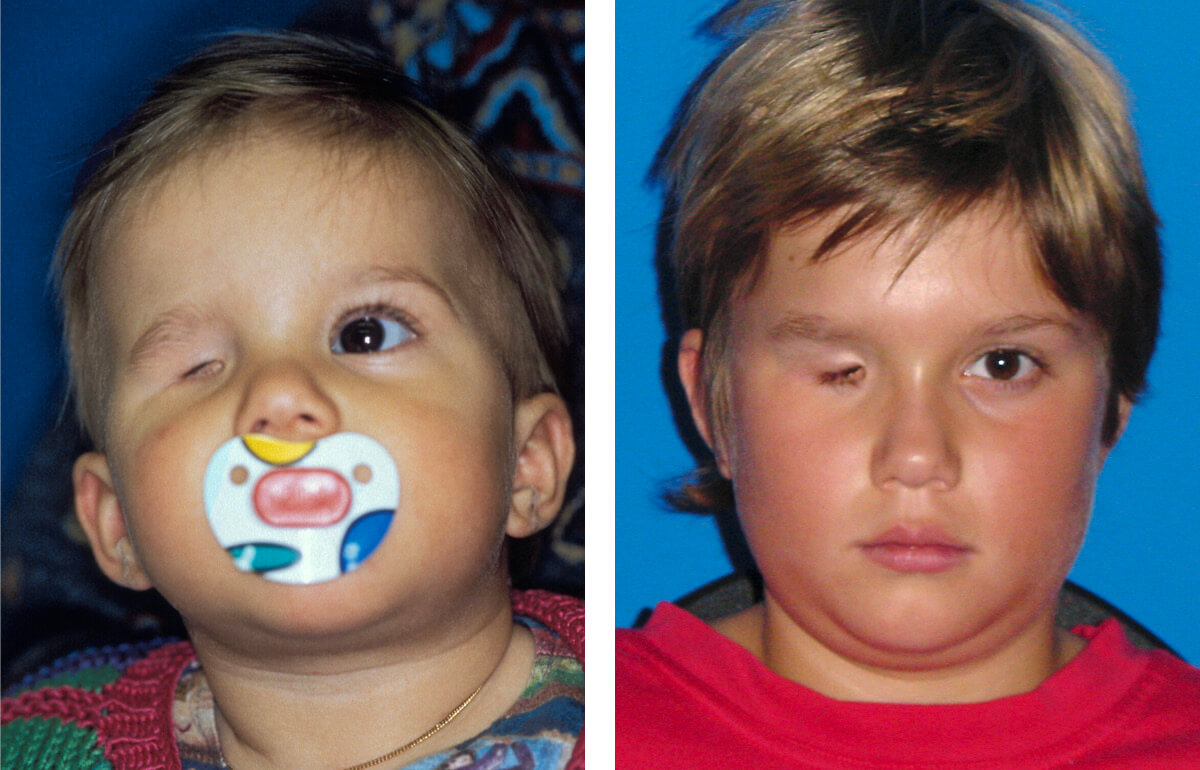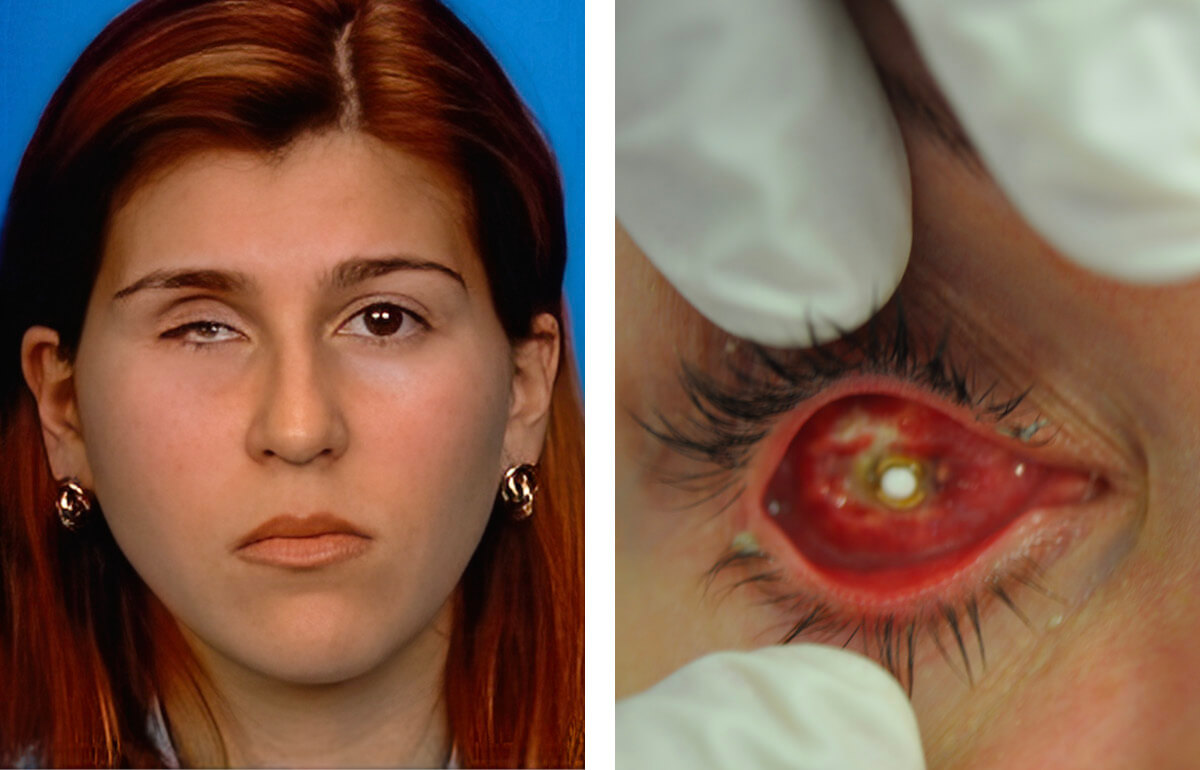
Recovering functionality and aesthetics
If an eyeball is lost due to an accident or a tumour and the eye socket is empty, this causes a huge aesthetic problem as the eyelid is no longer supported. A glass eye cannot correct this problem because it does not give the lids the necessary support.
Artificial eyeballs move in synchronisation with the healthy eye
Professor Sailer has great experience in the replacement of the lost eyeball with an hydroxylaptite implant. The eye muscles are fixed to this so that the artificial eyeball, and an eye prosthesis affixed on it, can move in synchronisation with the healthy eye.
Correction of backwards displacement of the eye (enophthalmus)
Following fracture of the cheekbone or a direct impact on the eye, the eyeball frequently sinks backwards, despite correct treatment, causing the upper eyelid to hang down. The eye therefore looks smaller. Professor Sailer corrects this condition without externally visible scars with the implantation of lyo-cartilage slices in the eye socket by means of transconjunctival access.
Correction of protrusion of the eye (exophthalmus)
An overactive thyroid (Graves’ disease) can lead to extreme protrusion of the eyes due to thickening of the eye muscles. Professor Sailer corrects this dangerous and aesthetically displeasing development by expanding the eye-sockets and removing fat tissue, so that the eyeball can recede.
Exophthalmus also occurs in the case of severe disfigurements such as Crouzon syndrome. In this case the eyes are not set back into the eye socket, but remain in their position. The eyes are protected by moving the midface forward (Le Fort 3 operation) and a lengthening of the eye sockets is achieved by means of a simultaneous frontofacial advancement (moving the forehead forward). In the case of severe facial disfiguration, postoperative aesthetics play a large role, as people affected by this fate wish to leave the many years of stigma attached to their condition behind them.
Removal of tumours and cysts inside and outside the eye sockets
Tumours and cysts inside the eye sockets or in neighbouring regions such as the maxillary sinus or frontal sinus generally lead to a protruding or displaced eye and to functional disorders. Professor Sailer removes these changes in the eye socket using access routes which he himself has helped to develop and which leave no visible scars.
Congenital absence of the eye socket (agenesis of the eye)
In the case of agenesis of the eye socket and the eyeball, Professor Sailer reconstructs the missing eye socket (orbita) using a special expander. The eyeball is imitated with an hydroxylapatite implant. Following this, the eyelids are reconstructed and the conjunctiva are constructed through the transplantation of free oral mucous membranes. An artificial eye shield manufactured by an anaplastologist completes the reconstruction procedure.
Eye bag reduction
In the case of bags under the eyes (lacrimal sacs), the problem is fat protruding from the eye socket. Our procedure for removing this fat uses transconjunctival access, i.e. access inside the lower lid, in order to avoid an external scar and turning outward of the eyelid as a common complication.



